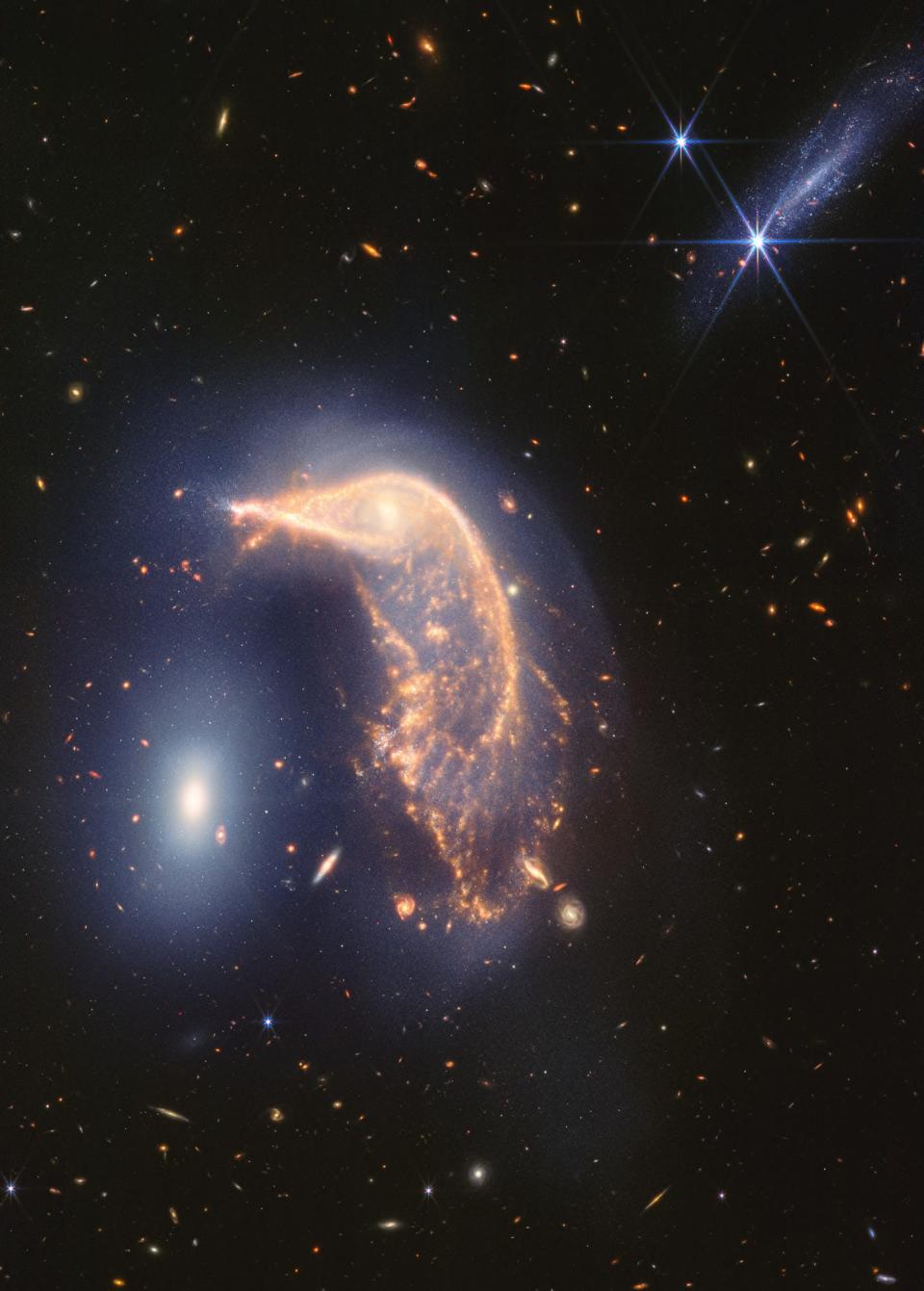James Webb telescope photos show the Penguin and Egg galaxies in greater detail
Scientists now have a better view than ever of a certain penguin's tail feathers − only the bird in question is not what you may expect.
NASA scientists running the James Webb Space Telescope have unveiled new photos of two galaxies dubbed the Penguin and the Egg for their shape and proximity to each other. Images of the galaxies already had been gathered by the Hubble Space Telescope, but the photos released Friday show stars, gas and space dust in greater clarity, NASA says. The photos of the Penguin and the Egg also mark two years since the first groundbreaking photos from the Webb telescope were released.

"Astronomers will often give cute names to things they study because it helps us remember and keep a catalog in our brain of interacting galaxies," said Eric Smith, the James Webb Space Telescope program scientist at NASA headquarters in Washington. "The Penguin and the Egg are a great example."
The Penguin galaxy, otherwise known as NGC 2936, is a spiral galaxy resembling the stout arctic bird, complete with a beak, a face with a bright eyeball, and a sloping, feathery-looking tail. The Egg, known as NGC 2937, is perched nearby (in astronomical terms) and is an elliptical, or oval-shaped, galaxy, thus the name.
The two galaxies are locked together in a gravitational "dance," NASA says, and despite their different sizes, they have about the same mass.
"They will go on to shimmy and sway, completing several additional loops before merging into a single galaxy hundreds of millions of years from now," NASA said in a statement.
Friday's images show gas shining more brightly, shown as a blue hue, and the Webb telescope is able to see beyond dust that has partially obscured the Penguin's "eye" in past images, Smith said.
"Studying stuff in space is just beautiful and fun," Smith told USA TODAY. "It's certainly one of my top favorite images."
This article originally appeared on USA TODAY: NASA James Webb telescope shows Penguin and Egg galaxies

